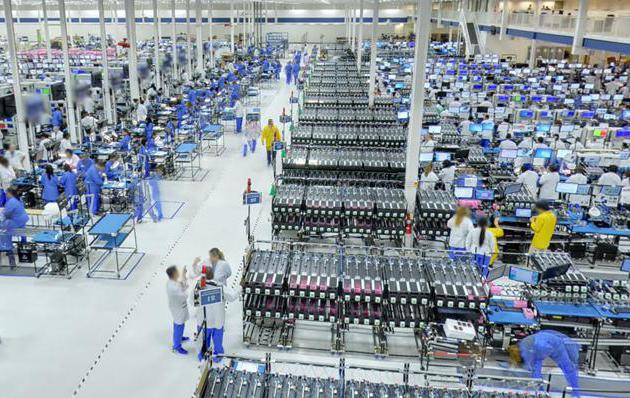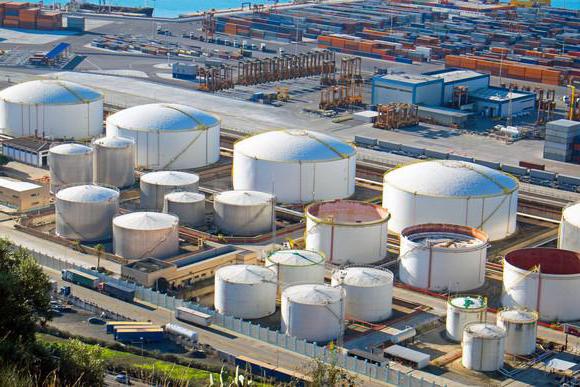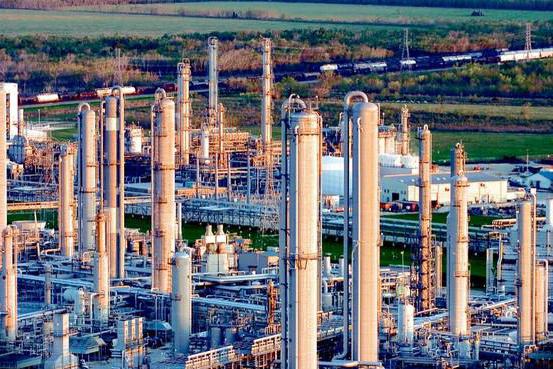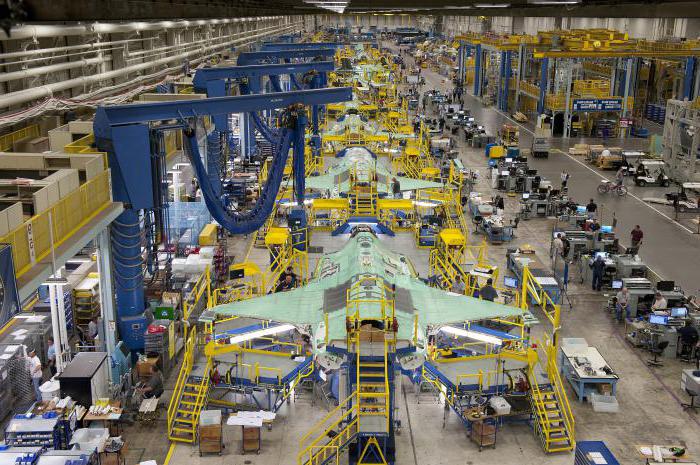In the process of development of the national economy, increasing productivity, technical and scientific support for production is of great importance. For this, the form of organization of the enterprise is transformed using various approaches. This opens up new prospects and opportunities for the national economic system.
Concentration of production is an important factor in scientific, technical and economic development. Using this form of organization of enterprises, it is possible to obtain a significant economic effect according to the results of the organization. What is the concentration, as well as what are its main features, will be discussed later.
general characteristics
Concentration of production is a process that helps to increase the number of products and services of a particular organization. This becomes possible due to the increased concentration of production capacities in the territory of one taken enterprise. This is characteristic both for a separate sector of the national economy and for their group.
Concentration is a factor in the development of the enterprise and industry. It provides an opportunity to apply the latest technology, scientific developments, rational specialization, combination and cooperation in production cycles.
During the concentration, the size of enterprises is enlarged, and it is also possible to distribute the total volume of output between organizations of various scale production. In the modern economy, much attention is paid to these processes.
Features
The increased level of concentration of production provides the company with a number of opportunities. This form of social organization has a number of features. First of all, it contributes to the creation and development of large-sized industries. At the same time, the output in each industry is focused on several specialized enterprises.
Concentration allows the use of high-performance new technology in production cycles. This entails an increase in labor productivity. At the same time, the activities of such organizations are constantly monitored in order to increase the profitability of production and reduce the cost of its manufacture. A large enterprise seeks to produce an optimal volume of products that will bring maximum economic effect at the end of the reporting period.
Despite all these features, concentration does not become the only correct way in the process of development of the organization. Depending on the characteristics inherent in each industry, they should have a certain number of different scale industries. Too much concentration can lead to negative results.
Forms of development
There are various forms of concentration of production. Depending on the characteristics of the economic activity of the organization, its management decides on the application of certain approaches in the process of functioning of their company. Optimal forms of concentration are determined.
For enterprises specialized in the production of certain products, an acceptable form of concentration is the production of more homogeneous products. Such companies do not make sense to establish new production cycles. They get more profit in the manufacture of specialized goods of a certain type.
There are organizations for which it is preferable to develop concentration through combination. Such industries include a number of enterprises specializing in the production of various products. For example, a steel production plant incorporates a coke plant, a mine and a mining and processing plant. Such cooperation is beneficial for all enterprises that are part of the same organization.
Concentration can develop with the introduction of diversification. The company produces various products. In the event of a drop in demand for one line of goods, other industries will be able to cover the loss from unprofitable production in the operating period.
Development factors
The concentration of industrial production in different enterprises can be achieved due to a number of factors. The main ones are an increase in units of equipment, machinery, vehicles. At the same time, the number of production lines is also growing. At the same time, the technical level of production remains unchanged. In fact, only production volumes are growing.
Concentration can also develop through the use of new equipment, which has higher performance. Thanks to modern technology, production growth is not carried out extensively, but intensively.
Most often, an increase in concentration occurs using both approaches. The number of fixed assets of the company is increasing. At the same time, the number of modern equipment with high performance indicators is growing in their composition.
Concentration can also be carried out by establishing production relations between individual industries in one or different industries.
Specialized Production
The concentration and specialization of production began to develop as one of the first forms of organization. During their existence, this approach to increasing output has become effective.
If the company specializes in the production of homogeneous products, it can increase its profits by increasing the scale of production. At the same time, it turns out to reduce the amount of costs and increase the profitability of production. This, in turn, contributes to more net profit.
The concentration of specialized production by maintaining a certain level of fixed costs allows to reduce the cost of finished products in the operational period. This approach is actively used by modern enterprises. The larger the scale of production, the higher the profit of the organization.
A specialized company can increase concentration using intensive and extensive methods. The first option is preferable. Often, to develop concentration and increase the scale of production, the number of units of equipment increases due to the acquisition of productive, modern equipment.
Combined production
When considering forms of concentration of production, the combination cannot be ignored. This is one of the most effective approaches to organizing a company. Thanks to him, it is possible to achieve a consistent implementation of production processes, comprehensively process raw materials, and use waste from various technological cycles. At the same time, less harmful substances enter the environment.
Combining as a form of concentration development allows you to increase profits by reducing production costs. All technological cycles of such an enterprise are connected. They occur without downtime. The number of finished products is increasing due to the use of modern technology, as well as established relations between enterprises of one or different industries.
Diversification
Concentration of production can be carried out through diversification. In the economic activity of the enterprise in this case there are different, unrelated technological cycles. This is a less effective form of organizing production than combining.
However, this approach reduces the risks of the company. With an unforeseen or seasonal drop in demand for one group of goods, other processing lines will be able to cover the loss.
With this form of concentration development, high efficiency cannot be achieved. Lack of specialization, the difficulties of repair and maintenance of equipment, as well as the impossibility of high-quality management of disparate production lines dramatically reduce the economic feasibility of diversification.
Types of concentration
Concentration of production and capital can be carried out in several directions. Due to the features of this process, there are 4 main forms of similar economic activity of the enterprise.
The first category includes aggregate concentration. It consists in the acquisition of new equipment with a larger unit capacity. The proportion of such equipment in fixed assets is also growing.
The second category includes industrial and technological concentration. It implies an increase in the number of technological equipment.
The third type is technological concentration. On the basis of the aggregate or production and technical approach, a proportional increase in capacity occurs in interconnected lines.
The fourth type is factory concentration. At the same time, there is an increase in the enterprise due to the complexity of its structure or technological approach.
Concentration analysis
To assess the level of concentration, a special system of indicators is used. They can be absolute or relative. They significantly affect the economic result of the company.
Absolute indicators of production concentration characterize the size of the enterprises included in the organization. These include the volume of products, the average number of employees, the cost of fixed assets.
Relative indicators allow us to analyze the distribution of products between all enterprises in the industry. Both presented groups of indicators have an impact on the profitability of the company, the cost of its products, etc.
Efficiency
A high concentration of production may be effective or impractical. The main criterion for determining this indicator for industrial enterprises is the use of available factors of production at the maximum level.
From the scope and specifics of the organization, its optimal sizes are calculated. For example, for the mining industry, this indicator is determined by assessing the reserves of raw materials in the places of its extraction. For some industries, it is important to correlate the amount of equipment, the possibility of technological cycles, labor resources and auxiliary industries. In this case, the company will be able to optimize costs and receive the maximum amount of net profit.
Control
The concentration of production is controlled at the enterprise by the relevant services. At the same time, it is possible to calculate the optimal volume of production at which the profitability will be maximum.
However, control of concentration is carried out at the legislative level. Often this form of development of the organization leads to the emergence in the industry of a monopolist or their group. This does not happen when implementing competent market regulation at the state level.
Considering what constitutes a concentration of production, we can say that this is a progressive, effective form of organization of enterprises.It requires constant monitoring for the harmonious development of the economy of the industry and the entire economic complex.